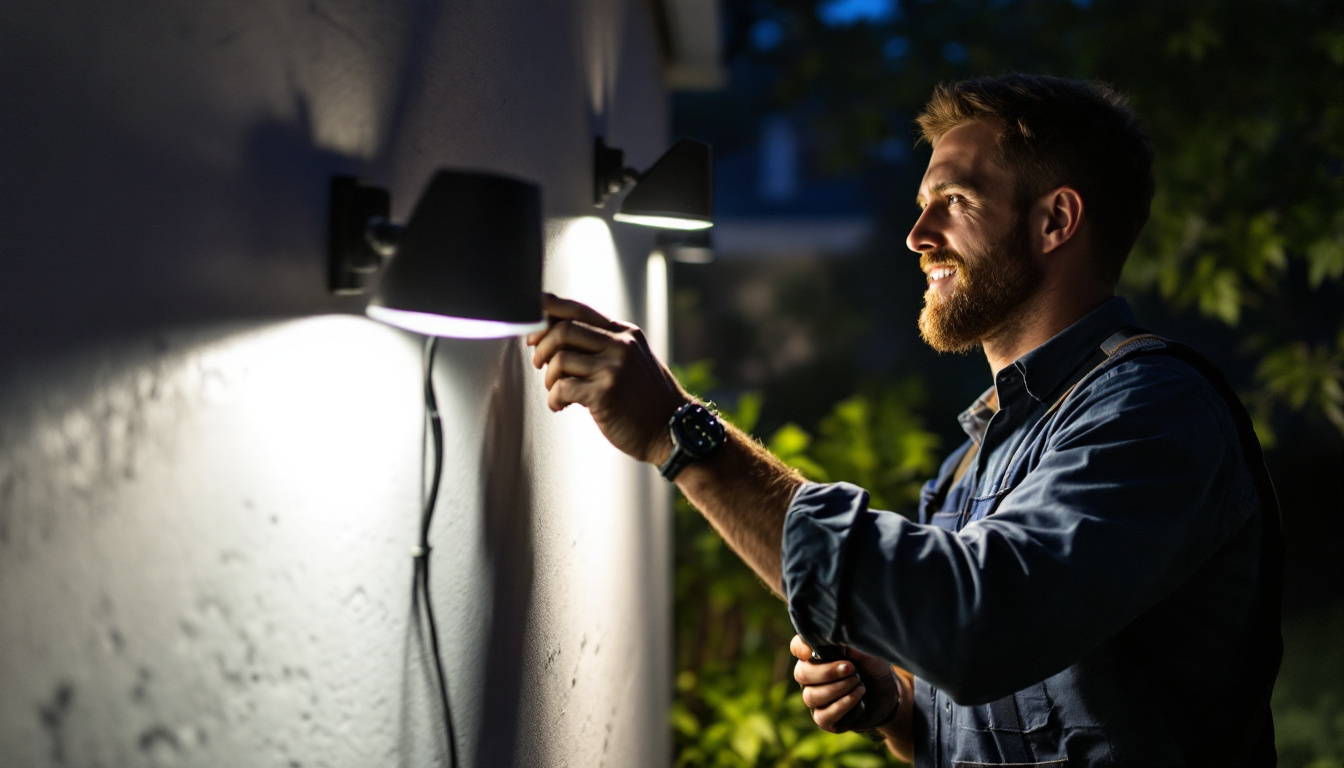
Incandescent light bulb dimmers are essential tools in the lighting industry, allowing for greater control over illumination levels in various environments. These devices not only enhance the aesthetic appeal of spaces but also contribute to energy efficiency and user comfort. For lighting contractors, understanding the functionality and benefits of these dimmers is crucial for delivering superior lighting solutions to clients.
An incandescent light bulb dimmer is an electrical device that adjusts the brightness of incandescent bulbs by regulating the voltage supplied to them. Unlike traditional on/off switches, dimmers enable users to set the desired light level, creating a more versatile and inviting atmosphere. This flexibility is particularly valuable in settings such as homes, restaurants, and theaters, where lighting plays a significant role in ambiance.
The operation of incandescent dimmers is based on a simple principle: they reduce the amount of voltage reaching the light bulb. This is typically achieved through a method called phase-cut dimming, which involves cutting off a portion of the AC waveform. There are two primary types of phase-cut dimmers: leading-edge and trailing-edge. Leading-edge dimmers are more common and work well with incandescent bulbs, while trailing-edge dimmers offer smoother dimming and are often used with modern LED lights.
Implementing dimmers in lighting design offers numerous advantages. First and foremost, they provide energy savings by allowing users to reduce the brightness of their lights, which in turn lowers energy consumption. Additionally, dimmers can extend the lifespan of incandescent bulbs by reducing the electrical stress placed on them. This not only saves money on replacement costs but also minimizes waste, contributing to a more sustainable approach to lighting.
Incandescent dimmers are versatile tools that can be employed in various settings. Their adaptability makes them suitable for both residential and commercial applications, enhancing the overall lighting experience.
In residential settings, dimmers can transform the ambiance of a home. They allow homeowners to create different moods for various activities, whether it’s a cozy dinner, a movie night, or a lively gathering. By adjusting the lighting, residents can enhance their living spaces and improve their overall comfort. Moreover, the ability to control light levels can be particularly beneficial in bedrooms and nurseries, where softer lighting is often preferred.
In commercial environments, such as restaurants and retail stores, the importance of lighting cannot be overstated. Dimmers enable business owners to craft specific atmospheres that align with their brand identity. For instance, a fine dining establishment may utilize dim lighting to create an intimate setting, while a retail store may adjust brightness levels to highlight merchandise effectively. This level of control can significantly impact customer experience and, ultimately, sales.
Event spaces, including banquet halls and theaters, also benefit from incandescent dimmers. These venues often require flexible lighting solutions to accommodate different types of events, from weddings to corporate presentations. Dimmers allow event planners to adjust the lighting to suit the occasion, enhancing the overall experience for attendees. Whether it’s spotlighting a speaker or creating a romantic ambiance for a wedding, dimmers provide the necessary versatility.
Selecting the appropriate dimmer for incandescent bulbs is crucial for optimal performance. With various options available on the market, understanding the features and specifications of each type can help lighting contractors make informed decisions.
When choosing a dimmer, compatibility with the specific type of incandescent bulb is essential. Most dimmers are designed to work with standard incandescent bulbs, but it’s important to verify that the dimmer can handle the wattage of the bulbs being used. Overloading a dimmer can lead to overheating and potential failure, so ensuring compatibility is a key factor in the selection process.
Modern dimmers come equipped with various features that enhance usability and performance. For instance, some dimmers offer programmable settings, allowing users to save preferred lighting levels for different activities. Others may include remote control capabilities, enabling users to adjust lighting from a distance. Additionally, look for dimmers with smooth dimming capabilities, as this can significantly improve the user experience by providing a gradual transition between light levels.
Installation of incandescent dimmers typically requires basic electrical knowledge. Contractors should be familiar with the wiring requirements and safety protocols to ensure a successful installation. Most dimmers can replace standard light switches, but it’s important to follow the manufacturer’s guidelines for wiring and load capacity. Additionally, ensuring that the circuit is adequately rated for the dimmer’s specifications is crucial for safe operation.
To maximize the benefits of incandescent light bulb dimmers, lighting contractors should adhere to best practices during installation and usage. These practices not only enhance performance but also improve customer satisfaction.
Before installation, conducting load calculations is essential. This involves determining the total wattage of the incandescent bulbs that will be connected to the dimmer. Ensuring that the total wattage does not exceed the dimmer’s rating is critical for safety and performance. This proactive approach can prevent issues such as flickering lights or dimmer failure, leading to a more reliable lighting solution.
Educating clients about the benefits and operation of dimmers can significantly enhance their experience. Providing guidance on how to use the dimmer effectively, including tips on achieving the desired ambiance, can empower clients to make the most of their lighting systems. Additionally, discussing energy savings and bulb longevity can underscore the value of investing in quality dimmers.
Encouraging regular maintenance checks can help ensure the longevity and functionality of dimmers. Over time, dust and debris can accumulate, potentially affecting performance. A simple cleaning routine can go a long way in maintaining optimal operation. Furthermore, advising clients to monitor for any signs of wear or malfunction can prevent larger issues down the line.
One of the most common issues faced with dimmers is flickering lights. This can occur due to several factors, including incompatible bulbs, poor connections, or an overloaded circuit. To resolve flickering, contractors should first check the compatibility of the bulbs with the dimmer. If the bulbs are compatible, inspecting the wiring and connections for any loose or damaged components is the next step. In some cases, reducing the load on the dimmer by using fewer bulbs may also help.
Inconsistent dimming performance can be frustrating for users. This issue may arise from using low-quality dimmers or bulbs that are not designed for dimming. To address this, lighting contractors should recommend high-quality dimmers and ensure that clients are using bulbs specifically labeled as dimmable. Additionally, testing the dimmer with different bulbs can help identify any compatibility issues.
Overheating is another concern that can arise with incandescent dimmers, especially if they are overloaded. If a dimmer feels excessively hot to the touch, it may indicate that the wattage exceeds the dimmer’s rating. In such cases, it is crucial to reduce the load or replace the dimmer with one that can handle a higher wattage. Educating clients about the importance of adhering to wattage limits can help prevent overheating issues.
The lighting industry is continuously evolving, and the future of lighting control is poised for exciting advancements. As technology progresses, lighting contractors must stay informed about emerging trends that may impact the use of incandescent dimmers and other lighting solutions.
Smart home technology is becoming increasingly popular, and smart dimmers are at the forefront of this trend. These devices can be controlled remotely via smartphones or integrated with home automation systems, allowing users to adjust lighting from anywhere. This level of convenience and control is appealing to many homeowners and can enhance the overall lighting experience.
As energy efficiency becomes a priority, integrating dimmers with energy management systems is gaining traction. These systems can monitor energy usage and adjust lighting levels based on occupancy or natural light availability. By leveraging such technology, lighting contractors can offer clients solutions that not only enhance comfort but also contribute to sustainability efforts.
As the demand for aesthetically pleasing environments grows, the design of dimmers is also evolving. Manufacturers are increasingly focusing on creating dimmers that blend seamlessly with interior décor. This includes offering a variety of styles, colors, and finishes that cater to diverse design preferences. Lighting contractors should keep an eye on these trends to provide clients with options that align with their design vision.
Incorporating incandescent light bulb dimmers into lighting designs offers numerous benefits, from enhancing ambiance to promoting energy efficiency. Understanding how to leverage these devices effectively is essential for lighting contractors aiming to provide superior solutions to their clients. By staying informed about best practices, common issues, and emerging trends, contractors can position themselves as knowledgeable professionals in the ever-evolving lighting industry.
As the demand for customizable and efficient lighting solutions continues to grow, embracing the capabilities of incandescent dimmers will be a key factor in delivering exceptional results. Whether in residential, commercial, or event settings, the ability to control lighting levels can significantly impact the overall experience, making it a valuable tool in any lighting contractor’s arsenal.
Ready to enhance your lighting designs with the best incandescent dimmers on the market? At LumenWholesale, we provide lighting contractors with exceptional, spec-grade lighting products that promise to elevate any space. Say goodbye to inflated markups and hello to premium quality at wholesale prices. Our extensive selection is designed to meet your project needs, ensuring reliability and high performance. Plus, with free shipping on bulk orders, you can get your lighting solutions conveniently and cost-effectively. Don’t compromise on quality or value; discover wholesale lighting at the best value today and bring your lighting visions to life with LumenWholesale.

Discover the top benefits of floodlights for outdoor projects in this insightful guide tailored for lighting contractors.

Discover how Lighting Fixtures USA can boost your lighting project efficiency by up to 30%.

Discover the ultimate guide to LED can lights with our comprehensive article.

Discover essential outdoor LED yard lights tips that lighting contractors often overlook.